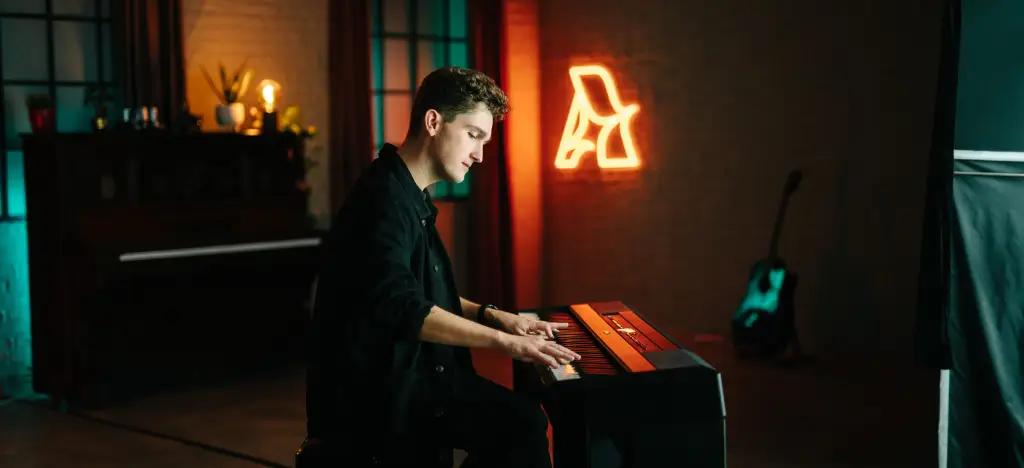Want to make your piano playing feel more polished and expressive? This article is packed with advanced techniques you can try immediately to make your sound richer, more expressive, and uniquely yours. And with our free video lesson by professional pianist and educator David Bennett, you’ll have everything you need to bring these ideas into your own practice.
- 1. Add depth to your piano chords
- Free video tutorial: Open voicings
- 2. Let your melodies speak
- 3. Show off your left hand
- 4. Use the pedal like a pro
- 5. Make the music your own
- 6. Play with dynamics and articulation
- 7. Keep time with a metronome
- 8. Record yourself playing piano
- 9. Work on finger strength
- 10. Embrace the power of silence
- Learn more professional piano tips for free
1. Add depth to your piano chords
 One of the easiest ways to add depth to your piano playing is by experimenting with fuller chord voicings. I often play around with chords on my digital piano—it’s one of my favourite ways to start composing. These small changes can instantly make your sound richer and more powerful without altering the basic harmony. Here are a few techniques to try:
One of the easiest ways to add depth to your piano playing is by experimenting with fuller chord voicings. I often play around with chords on my digital piano—it’s one of my favourite ways to start composing. These small changes can instantly make your sound richer and more powerful without altering the basic harmony. Here are a few techniques to try:
Octave doubling: Instead of playing a simple E major chord (E-G♯-B), try expanding it to E-B-E-G♯-B-E. Doubling the root and fifth in different octaves reinforces the chord’s core tones, making the sound fuller and more resonant. You can hear this in "Someone Like You" by Adele, where the chords create a strong, supportive foundation for the vocals.
Add colour with 7ths or 9ths: Introducing a 7th or 9th to your chords can add warmth and complexity, giving even basic chords a more layered sound.
Inversions for smooth transitions: Changing the order of the notes in a chord (using inversions) creates seamless transitions. In "Perfect" by Ed Sheeran, smooth inversions help connect each chord beautifully with the lyrics.
Suspended chords: Adding a sus2 or sus4 creates tension before resolving to the main chord, adding movement and anticipation to your playing.
How to try it: Start with a basic triad, like E major (E-G♯-B), and add octave doublings or try a 7th. Experiment with inversions and suspensions to explore how they transform the chord’s feel.
► ARTMASTER TIP: Take a listen to the classic "Let It Be" by The Beatles. The song’s use of triads with octave doubling, open voicings, smooth inversions, and suspended chords creates a warm, resonant foundation that perfectly complements its emotional tone.
Free video tutorial: Open voicings
A great technique to use is an open voicing (or spread voicing). This type of voicing expands the chord by doubling some notes in different octaves and spreading the intervals, particularly the root and fifth, to create a wider, fuller sound.
Check out David Bennett's video tutorial below to learn how to use open voicings and pick up some additional tips along the way.
► ARTMASTER TIP: For more tips and tricks like these, try out David's full course Piano - Sound Like a PRO.
2. Let your melodies speak
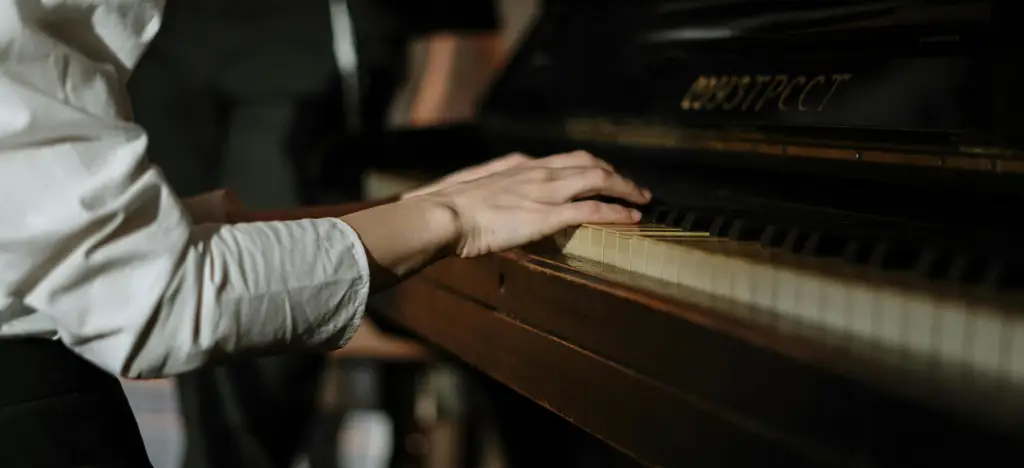 An expressive piano melody can make all the difference in connecting with listeners. By adjusting volume, timing, phrasing, and adding decorative elements like grace notes, you can transform a simple melody into something that feels alive and meaningful.
An expressive piano melody can make all the difference in connecting with listeners. By adjusting volume, timing, phrasing, and adding decorative elements like grace notes, you can transform a simple melody into something that feels alive and meaningful.
Bring out the emotion with dynamics: Play around with volume (dynamics) to highlight key moments in the melody. For instance, in "Shallow" from A Star is Born, the way the volume shifts between verses and chorus creates emotional peaks that really hit home.
Use rubato for expression: Rubato, or flexible timing, means slowing down or speeding up certain parts of the melody. This slight timing shift adds a natural, human quality. In "River Flows in You" by Yiruma, rubato brings out the piece's flowing, emotive quality.
Add flair with grace notes: Grace notes are quick, ornamental notes added just before a main note. You can hear these in contemporary pop songs, like "Bad Liar" by Imagine Dragons, where the grace notes add a nice touch.
Try different articulations: Articulation—whether you play notes smoothly (legato) or short and detached (staccato)—changes the mood of the melody. In "Comptine d’un autre été: L'après-midi" by Yann Tiersen, the combination of legato and staccato creates a whimsical yet touching atmosphere.
How to try it: Take a simple melody and try each of these techniques. Start softly, build volume on key notes, add slight pauses, and try a grace note before a main note. Notice how each adjustment enhances the melody’s expressiveness.
► ARTMASTER TIP: To find out more about chord progressions and melody check out our guide — How music theory can improve your songwriting skills or try out David's Music Theory for Beginners course.
3. Show off your left hand
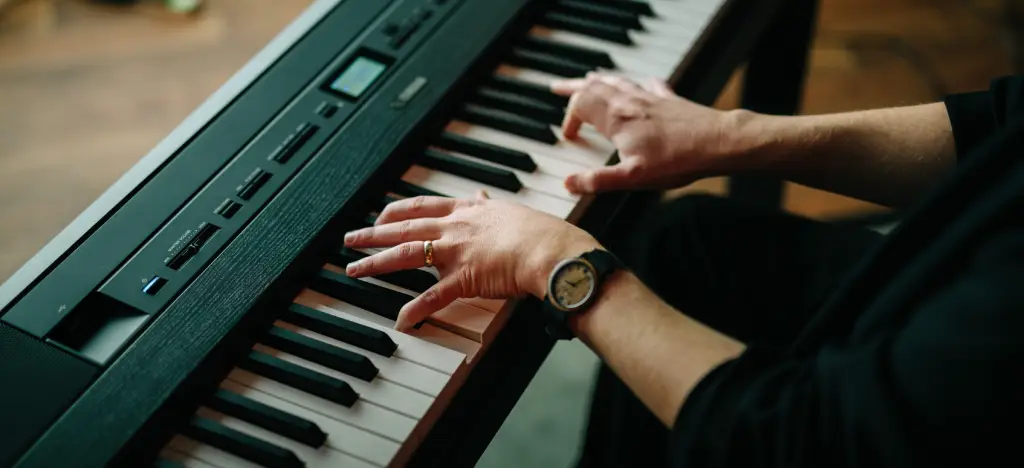 It's far too easy to overlook the left hand, but it can add much more than just background support—it brings depth, rhythm, and movement to your music. Here are some ways to make the most of it:
It's far too easy to overlook the left hand, but it can add much more than just background support—it brings depth, rhythm, and movement to your music. Here are some ways to make the most of it:
Rhythmic bass lines: In pop music, left-hand patterns often feature rhythmic bass lines. In "Stay" by The Kid LAROI and Justin Bieber, the left hand’s rhythm drives the song’s energy and keeps it moving.
Flowing arpeggios: In classical crossover pieces like "Nuvole Bianche" by Ludovico Einaudi, the left hand creates a continuous, flowing arpeggio pattern that enriches the texture and adds depth.
Syncopation: Add syncopation (off-beat accents) to create a more interesting groove, often used in jazz and pop. This adds complexity and a sense of momentum to the music.
How to try it: Start with a basic walking bass line in your left hand or play an arpeggio pattern that breaks up the notes of a chord. Experiment with syncopated rhythms by playing off the beat to create a groove, or try a steady pulse that complements the right hand while adding rhythmic interest.
4. Use the pedal like a pro
 Used skillfully, the sustain pedal can create a world of sonic possibilities, helping you control everything from resonance to clarity in your music. Here’s how to use it more effectively:
Used skillfully, the sustain pedal can create a world of sonic possibilities, helping you control everything from resonance to clarity in your music. Here’s how to use it more effectively:
Half-pedaling: Press the pedal halfway to create a softer, blended effect. This technique is perfect for giving a piece a dreamy, subtle sound, like in "Falling" by Harry Styles, where the piano accompaniment has a lush, ambient quality.
Delayed pedaling: Press the pedal just after striking the keys to keep the initial note clear while allowing it to resonate. This technique adds clarity and is especially useful for creating a flowing, legato feel.
Sostenuto pedal: The sostenuto pedal sustains only selected notes, allowing you to hold bass notes while freeing up the melody. This technique works well in pieces where you want the lower tones to linger, adding depth without blurring the higher notes.
How to try it: Experiment with pressing the pedal lightly for half-pedaling and try delayed pedaling to keep each note’s attack clear. Use the sostenuto pedal to hold bass notes, then let your right hand play freely over them, adding layers to your music that elevate the overall sound.
5. Make the music your own
 Arranging a song yourself lets you bring your own personality and style to the music, making it truly unique. Many artists reinterpret songs to add their unique spin. For instance, piano covers of "Someone You Loved" by Lewis Capaldi often include creative reharmonization, turning the original into something fresh while retaining its emotional core.
Arranging a song yourself lets you bring your own personality and style to the music, making it truly unique. Many artists reinterpret songs to add their unique spin. For instance, piano covers of "Someone You Loved" by Lewis Capaldi often include creative reharmonization, turning the original into something fresh while retaining its emotional core.
Reharmonization: Change the chords to add a new flavour. Many piano covers of "Someone You Loved" by Lewis Capaldi use creative reharmonization, turning the original chords into something fresh and personal.
Key changes: Experiment by playing the song in a different key, or try switching from a major to a minor key (or vice versa) to change the mood. This can give familiar songs an entirely new feel.
Rhythm variation: Adjust the rhythm by slowing down or speeding up certain sections, or even adding syncopation, to make the piece feel unique. Artists often do this in live performances to keep the song dynamic and surprising.
How to try it: Take a familiar song and try reharmonizing by adding 7ths, 9ths, or even switching to a minor key. You can also alter the rhythm to make the song feel slower or faster, as many artists do in their live performances.
6. Play with dynamics and articulation
 Think of dynamics (volume) and articulation (how you play each note) as storytelling tools. They add layers of expression that can make even simple pieces feel profound. Here’s how to bring out the best in your piano playing:
Think of dynamics (volume) and articulation (how you play each note) as storytelling tools. They add layers of expression that can make even simple pieces feel profound. Here’s how to bring out the best in your piano playing:
Soft and loud dynamics: Varying the volume within a piece adds contrast and emotion. For example, in "Hallelujah" by Leonard Cohen, the piano shifts between soft verses and powerful choruses, creating an intense emotional journey.
Legato vs. Staccato: Mixing smooth, connected notes (legato) with short, detached ones (staccato) brings texture to the music. In "Someone Like You" by Adele, switching between legato and staccato adds depth and helps convey the song’s poignant story.
How to try it: Play a phrase staccato (short and detached) and another legato (smooth and connected). Notice how each approach changes the character of the music. Experiment with varying the dynamics throughout a piece to see how it enhances the overall impact.
7. Keep time with a metronome
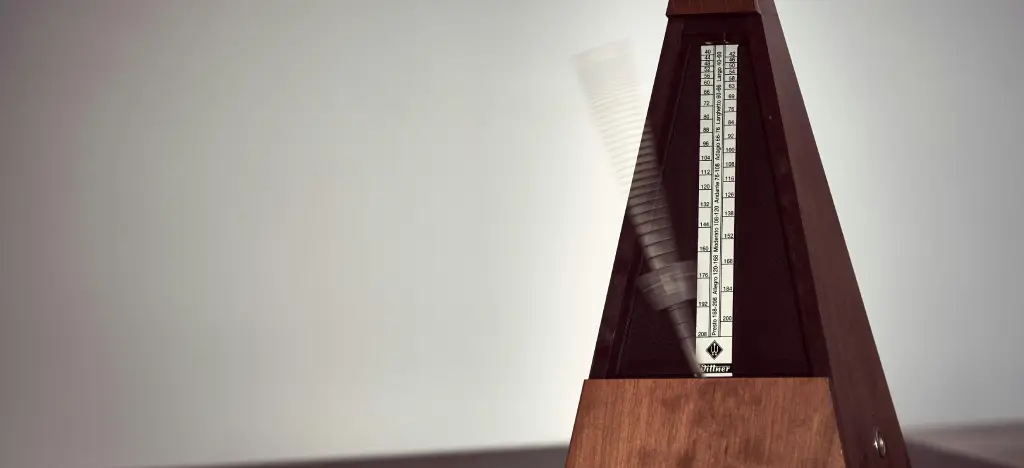 While it may seem restrictive at first, practising with a metronome actually gives you more freedom to express yourself. Here’s how to make the most of it:
While it may seem restrictive at first, practising with a metronome actually gives you more freedom to express yourself. Here’s how to make the most of it:
Slow practice: Start at a slower tempo to master difficult passages with accuracy. Gradually increase the speed as you become comfortable. This approach is particularly useful in pieces with complex rhythms, like "The Entertainer" by Scott Joplin, where maintaining a consistent beat is key.
Build a steady groove: Songs like "Shape of You" by Ed Sheeran rely on a solid, steady beat that drives the song forward. Practising with a metronome can help you internalize this groove, which is essential for rhythmically driven pieces.
How to try it: Set your metronome to a slow tempo and focus on staying perfectly in time with each click. As you build confidence, gradually increase the speed. Practising in this way strengthens your timing, helping you stay grounded and steady even as you add expressive rubato.
► ARTMASTER TIP: For more tips on practising with a metronome, take a look at our comprehensive guide — How to play with a metronome.
8. Record yourself playing piano
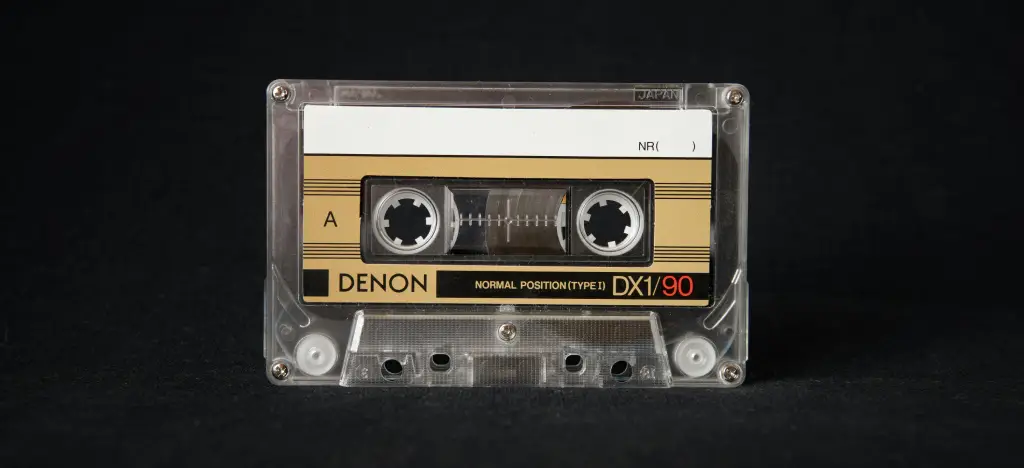 Recording yourself is one of the best ways to get an objective look at your playing and having a smartphone has made it easier than ever. Hearing your music from a listener’s perspective can reveal nuances you might miss in the moment and help you improve. Here’s how recording can make a difference:
Recording yourself is one of the best ways to get an objective look at your playing and having a smartphone has made it easier than ever. Hearing your music from a listener’s perspective can reveal nuances you might miss in the moment and help you improve. Here’s how recording can make a difference:
Evaluate timing and dynamics: Listening to your own recordings can highlight areas where timing or dynamics might need adjustment. For example, playing a song like "All of Me" by John Legend allows you to listen back for moments where volume changes could add more emotion.
Track your progress: Regularly recording your practice sessions lets you see how your playing evolves over time. It can be motivating to hear subtle improvements in phrasing, timing, and expression as you continue practising.
How to try it: Use a smartphone or simple recording device to capture your playing. Listen back critically, taking note of any areas for improvement, like timing, dynamics, or articulation. Over time, you’ll be able to track your growth and pinpoint new areas to focus on.
► ARTMASTER TIP: If you want to get deeper into professional recording techniques. Recording for Beginners by Grammy-winning audio engineer Chris Kaysch is a great place to start.
9. Work on finger strength
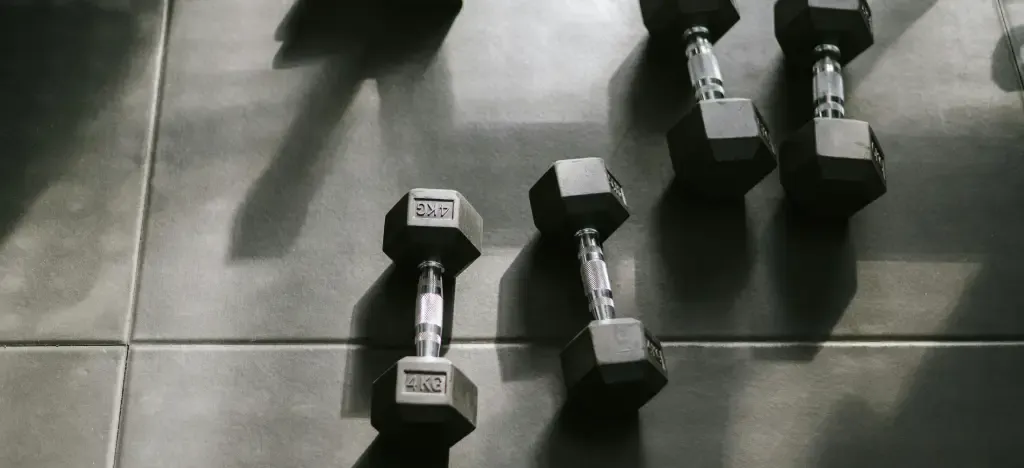 Strong, agile fingers are essential for tackling more challenging pieces with ease and control. Building finger strength will help you play faster passages more fluidly and make your playing sound effortless. Here’s how to strengthen your fingers:
Strong, agile fingers are essential for tackling more challenging pieces with ease and control. Building finger strength will help you play faster passages more fluidly and make your playing sound effortless. Here’s how to strengthen your fingers:
Scales and arpeggios: Practising scales and arpeggios regularly builds control, strength, and finger independence. Pieces like "River Flows in You" by Yiruma benefit from fluid finger movement, which you can develop through consistent scale practice.
Hanon exercises: Hanon exercises are a classic method for strengthening each finger individually, improving your precision and speed. These exercises are especially helpful when preparing for intricate or fast pieces that require finger dexterity.
How to try it: Start by playing scales and arpeggios slowly, focusing on evenness and control. Gradually increase speed as you feel comfortable. Add Hanon exercises to your routine to target finger strength and independence, allowing you to tackle complex passages with ease.
► ARTMASTER TIP: Playing piano is great for you physically and mentally. Find out about the latest research on how learning music benefits the brain and body.
10. Embrace the power of silence
 Silence is as important as sound in music; it creates anticipation and highlights important moments. Learning how to use silence effectively can make your playing more expressive and captivating. Here’s how to bring the art of silence into your music:
Silence is as important as sound in music; it creates anticipation and highlights important moments. Learning how to use silence effectively can make your playing more expressive and captivating. Here’s how to bring the art of silence into your music:
Pauses for drama: Brief pauses before an important note or phrase can heighten emotional impact. In "Someone You Loved" by Lewis Capaldi, the use of silence between phrases adds tension and draws the listener in.
Reflective silence: Leaving subtle spaces within your playing can give listeners a moment to absorb the music, adding depth. This technique is particularly effective in pieces like "Clair de Lune" by Debussy, where gentle pauses create a serene, contemplative atmosphere.
How to try it: Experiment by adding a short pause before a key phrase or note, and notice how it affects the music’s mood. Use silence to let important notes “breathe” and resonate, giving your playing a more intentional and emotional quality.
Learn more professional piano tips for free
Find out more great tips and tricks from professional pianist and educator David Bennett in his course Piano - Sound Like a PRO.
Try it for free with your 7-day free trial.

